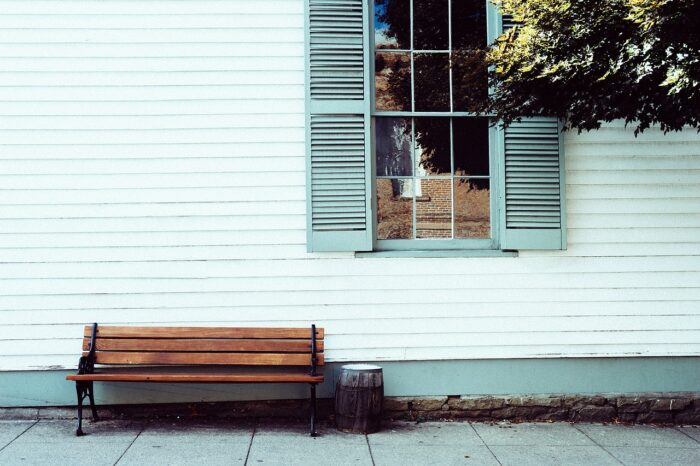First Things to Notice
One of the first things that people notice about the exterior of your house is its color and the material. While it is difficult to convert a house with siding to brick or stucco or vice versa, it is possible. Choosing the correct siding for your home will not only help (or hurt) your curb appeal but can impact your energy costs.
Each material has its own benefits and drawbacks, as described in the rest of this blog.
Before deciding on a material, it is important to determine your budget, not only for the actual installation, but maintenance, upkeep, energy savings, and resale value if you are rehabbing the home. While the siding may be less expensive at purchase, it may be more expensive to maintain.
Types of Material
Plank siding comes in three different materials: vinyl, wood, and aluminum. Vinyl is the least expensive to purchase/install if you are building new or replacing plank siding, but it is not durable and cannot be painted when it fades, lowering your home’s value as it ages. It can also be easily damaged by hail, melts easily if there is a fire nearby, and its use is restricted in older neighborhoods. Another type of vinyl siding is insulated vinyl siding, which has expanded polystyrene foam built into the ridge of the panel.
Aluminum siding is also less expensive and is a natural alternative to vinyl siding that can be recycled at the end of its lifespan. Unlike vinyl siding, aluminum can be painted, but is also susceptible to hail damage.
Wood siding is a natural and durable alternative as long you maintain the paint or stain and have regular termite control treatments. It is more expensive but will last more than a lifetime if maintained. Engineered wood looks like real wood and is less expensive but is prone to mold and mildew damage if there is moisture behind the siding.
Stucco is a mixture of lime or sand or cement and cement that is spread on a flat as a paste and dries into a firm surface. This is not a good choice for rainy or humid areas because it is porous and absorbs the water.
Brick siding is the most durable and long-lasting, but also the most expensive, whether building new or retrofitting your existing home. The color can vary depending on the type of clay used, is resistant to fire, and easy to maintain. Real brick is also energy efficient and eco-friendly. Faux brick panels do not have the same benefits, but also do not have the disadvantage of mortar damage in harsh environments.
As mentioned with several of the materials above, you need to take into consideration the climate where you live. Here in the Midwest, aluminum and vinyl siding and stucco are not suitable options, even though many homes are built with them. If you live in a densely spaced neighborhood, brick is safest, with wood being worth the investment everywhere else.
The overall beauty of your home’s exterior is also an important consideration. If you are someone who likes to have the most up-to-date colors on your home, vinyl siding will not work for you, nor will brick (even though painting brick is trendy currently). Also consider the exteriors of the other homes on the street. If most of the homes are brick or stone, a home with plank siding is likely to look out of place.
Energy Efficiency
Energy efficiency is also crucial to think about when building or residing in your existing home. Insulation types and values vary between materials, so ask about the R-value (resistance to heat flow) when selecting siding.
Durability and Maintenance
Durability and Maintenance are important considerations, especially if you are planning on living in the same home for many years. How much time and effort are you willing to invest in maintaining the appearance of the siding, such as painting, staining, sealing, or power washing (especially if you go with a light color).
In many communities, older neighborhoods and subdivisions with Homeowners Associations (HOAs) put restrictions on the types of materials that can be used on the outside of the house. Older neighborhoods typically require real wood siding instead of vinyl or aluminum and HOAs may require a certain material such as stone or brick of a specific color.
Many siding manufacturers offer warranties. Try to find one with a more extended warranty period so you can be confident in the quality and longevity of the siding.
Having your siding professionally installed ensures it is done correctly. Improper installation can lead to issues like water infiltration, decreased longevity, and void the warranty.
Many people are purchasing products based on their environmental impact. Some materials are recyclable, such as aluminum siding, others are damaging to the Earth, such as stone extraction, and others such as vinyl siding, leave a large carbon footprint.
Choosing siding for your home is a long-term investment. By doing your research, you will be satisfied for years to come.





